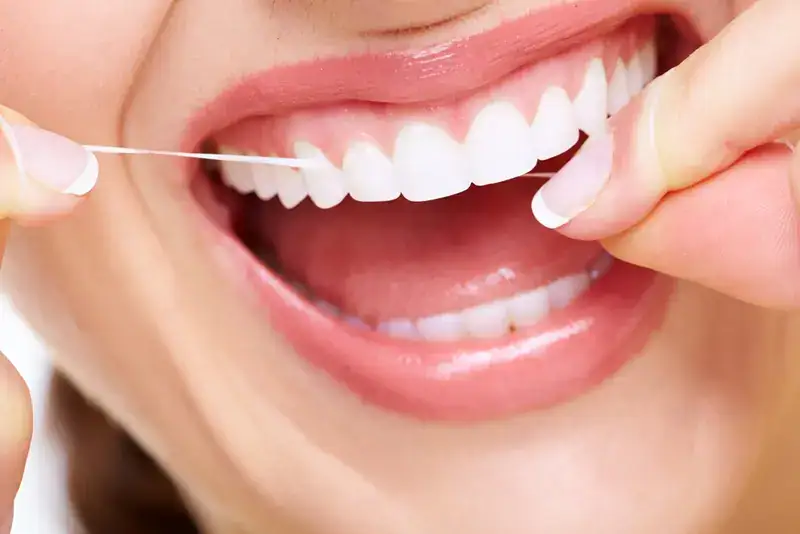A dentist will always tell you to brush and floss at least twice a day. However, some people don’t enjoy flossing and so choose not to do it.
It’s important that you floss as instructed by your dentist, because it contributes to oral hygiene in a way that brushing cannot. Let’s investigate why flossing is important and how you should be doing it.
Why is flossing important?
The reason you’re told to floss is so that you can remove food particles and plaque from in between your teeth and in any hard to reach crevices.
Don’t assume that brushing will completely clean your teeth alone. The spaces between teeth and along your gum line are much harder for the bristles to get into, so they must instead be targeted by careful flossing. If this plaque is not removed, it can harden into tartar which contributes to periodontal pocketing and gum disease.
Tartar is also generally considered unsightly, as it’s more susceptible to staining than dental enamel. If allowed to build up, tartar can also make flossing more uncomfortable and create more surface area for plaque to proliferate.
 It’s just as important to floss as it is to brush.
It’s just as important to floss as it is to brush.Is it more important to floss or brush?
It’s vital you maintain a thorough, consistent oral health routine that includes both brushing and flossing to prevent gum disease and decay.
While flossing removes plaque from the crevices of your mouth, brushing is important to remove surface particles much more quickly. That said, there is some argument that could be made to say that flossing is more important, only because the consequences of not doing so may be be more harmful.
At the end of the day, you’ll benefit most from doing both as they serve slightly different functions.
In order for brushing to be worthwhile, it’s important you use proper technique.
What’s the best way to floss?
In order for brushing to be worthwhile, it’s important you use proper technique.
To floss thoroughly, wrap the floss in a ‘c-shape’ around a tooth, covering about half of the surface of each side of the tooth. Move the floss up and down, removing particles from between the teeth but also the surface of the teeth. Pay particular attention to the gum tissue and guide the floss as far under it as possible to clean out any plaque that may be lying there.
A 2018 study in the Journal of Periodontology found that flossing before brushing may be more beneficial than the reverse. The study examined remaining plaque in participants’ mouths after brushing then flossing, and compared the results to the same group of participants after flossing first. The results of flossing before brushing were significantly better, which the researchers suggest is because flossing loosens bacteria and debris, and brushing and rinsing then further washes particles away.
How to make flossing less unpleasant
If you struggle with flossing, you’ll be glad to know there are alternatives to floss which may help you maintain your oral hygiene.
- Interdental brushes: These are tiny brushes, made of a plastic handle and thin rigid wire with many bristles around it – somewhat resembling a pipecleaner. You’ll insert the head of the brush between your teeth as you would floss, but some find these easier to use, especially if they have limited mobility or motor skills.
- Floss picks: Floss picks are essentially short lengths of floss held taught in a Y-shaped plastic frame, with a handle. These are almost identical to floss but again can be easier to use and, if a non-disposable option is chosen, less wasteful.
- Water flosser: For those who cannot stand putting anything between their teeth, a water flosser may prove effective. A flosser either uses a reservoir or attaches to your faucet. It can then be used to push high-pressure water between your teeth to wash out any particles.
You should consult with a dentist if you’re considering an alternative to flossing, as they’ll be able to recommend the best option for your needs.
To discuss your oral hygiene, book an appointment online or call City Dentists on 04 978 4964 today.
